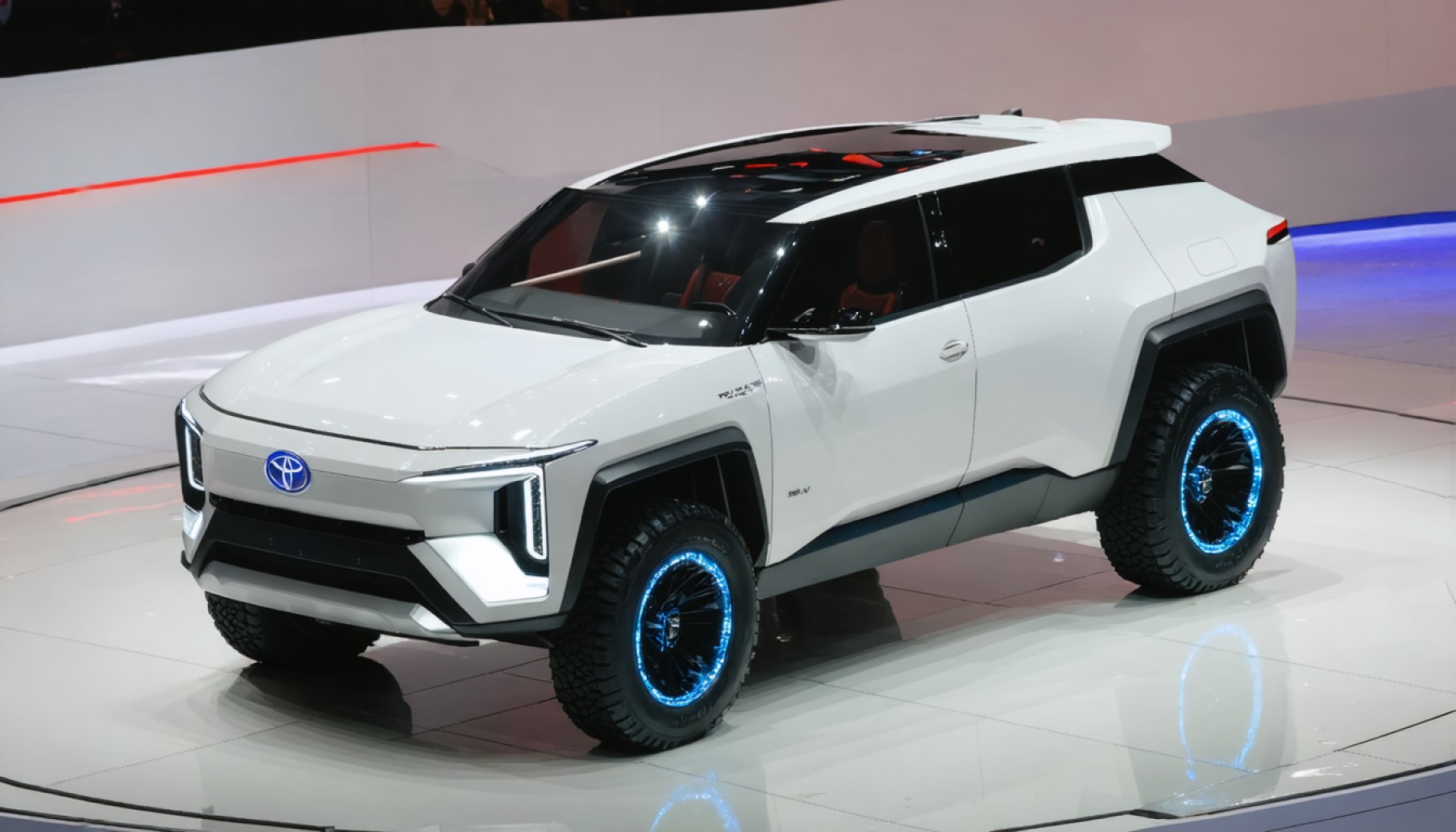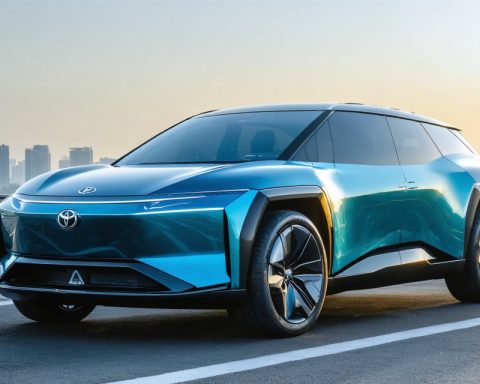- Toyota has introduced the bZ3X, its most affordable electric SUV, in China, with a starting price of RMB 109,800 ($15,150).
- The bZ3X attracted over 10,000 customers within its first hour of launch, showcasing strong market interest.
- With advanced features such as a 14.6-inch touchscreen and Snapdragon 8155 technology, the SUV melds style and innovation.
- Two variants feature LiDAR and Nvidia Orin X technology, enhancing autonomous driving with the Momenta 5.0 smart system.
- Limited-time price reductions are offered, lowering starting prices to RMB 104,800, promoting accessibility to EV luxury.
- Despite lower sales compared to domestic brands, Toyota aims to increase its influence in China’s growing NEV market.
- The launch signifies Toyota’s commitment to shaping the future of mobility and reinforcing its brand position in the EV sector.
In a bold move that challenges the status quo of the electric vehicle market, Toyota has launched its most affordable battery electric vehicle to date—the bZ3X—in China. This ground-breaking SUV roared onto the scene, leaving behind a trail of excitement and over 10,000 eager customers within its first hour of revelation. Cast amid a backdrop of competitive pricing and advanced features, the bZ3X stands as a monument to Toyota’s commitment to redefine the perception of Japanese EVs.
The stage was set at an electric pace when GAC Toyota, Toyota’s joint venture with the GAC Group, unveiled the bZ3X with a tantalizing starting price of RMB 109,800 ($15,150). This move shattered the commonly held belief that Japanese electric vehicles are cost-prohibitive. For many, it was a revelation; a sign that Toyota was ready to claim its slice of the ever-expanding Chinese EV market.
To truly appreciate the bZ3X’s appeal, one must dive deeper into its essence—a receptive blend of style and technology. The SUV boasts dimensions that command attention, measuring 4,600 mm in length. Its interior aligns with the future, displaying a 14.6-inch touchscreen consistent with cutting-edge Tesla models. Under its hood beats the heart of innovation—a Qualcomm Snapdragon 8155-powered system, a testament to Toyota’s forward-thinking philosophy.
Elevating the stakes, two of the seven available variants are equipped with LiDAR, marking GAC Toyota’s entry into this pristine sphere as the first joint venture brand in China to embrace LiDAR technology. These variants integrate Momenta’s 5.0 smart driving system, equipped with Nvidia Orin X chip’s formidable 254 TOPS computing power, primed for a hyper-connected autonomous driving experience. Full-scenario Navigate on Autopilot (NOA) functionality is now within reach, transcending reliance on high-definition maps.
Each variant’s price strikes a balanced chord between accessibility and sophistication. For a limited time, potential buyers can avail themselves of enticing price reductions, further democratizing the entry into EV luxury. Starting prices can plummet as low as RMB 104,800—a strategic nudge for those on the fence to climb aboard the electric revolution.
Beneath these surface specs lies a larger narrative. The launch of bZ3X isn’t just about a new vehicle; it’s a calculated move by a titan of the automotive industry to regain traction in a fiercely competitive landscape. Despite lagging behind domestic brands in NEV sales, Toyota’s recent launch seems poised to turn a new leaf. With a significant uptick in local NEV penetration rates reaching 41.5% by January, Toyota’s narrative grows ever more compelling.
The launch of the bZ3X is more than a vehicle announcement. It’s a clarion call to drivers and competitors alike that Toyota isn’t just entering the EV conversation—they’re poised to impact it profoundly. As Japan’s automotive titan sets its sights on the roads less traveled by its predecessors, the message is clear: The future of mobility is not merely inevitable—it’s here, and it’s led by one of the most trusted brands on the planet.
Toyota’s bZ3X: The Head-Turner in the EV Arena You Need to Know About
A Deeper Dive into Toyota’s bZ3X EV Launch
Toyota’s bold entry into the electric vehicle (EV) market with its bZ3X model in China marks a significant shift in the landscape. Priced affordably at RMB 109,800 (approximately $15,150), the bZ3X is redefining perceptions of Japanese-made EVs, traditionally seen as expensive. The overwhelming response—over 10,000 interested buyers within the first hour—underscores its market impact.
Features and Specifications
1. Are the Features Competitive?
The bZ3X’s features align Toyota with tech-forward and cost-conscious consumers:
– Dimensions: Stands at 4,600 mm in length, a commanding yet practical size for urban and suburban use.
– Interior Technology: Includes a 14.6-inch touchscreen, comparable to Tesla’s pioneering interfaces, enhancing driver engagement.
– Performance System: Powered by a Snapdragon 8155 system, showcasing Toyota’s commitment to innovative technology integration.
2. Advanced Driving Technologies
Toyota leverages its joint venture with the GAC Group to offer unprecedented technology:
– LiDAR Technology: Two variants come with LiDAR, making Toyota the first joint venture brand in China to integrate this technology for enhanced autonomous driving capabilities.
– Smart Driving System: Features Momenta’s 5.0 system and Nvidia Orin X chip, delivering 254 TOPS computing power for comprehensive autonomous navigation without high-definition maps.
Market Trends and Predictions
1. What Does the Future Hold for Toyota in China’s EV Market?
With the Chinese NEV market penetration rate reaching 41.5% by early 2023, the bZ3X positions Toyota to regain market prevalence.
2. Pricing Strategies for Market Penetration
Initially priced at RMB 109,800, introductory offers reduce it further to RMB 104,800, creating a compelling purchase decision for potential buyers.
Controversies and Limitations
1. Are There Hidden Limitations?
While Toyota’s entry is significant, challenges remain:
– Competitive Pressure: Domestic brands dominate the Chinese EV market, offering established ecosystems and potentially more personalized services.
– Brand Perception: Overcoming historical perceptions of Japanese EVs as expensive or less advanced is an ongoing effort.
Real-World Use Cases and User Perspectives
1. Is the bZ3X Practical for Everyday Use?
Yes, designed for daily commuters and tech-savvy drivers who value advanced in-car technology and affordability.
2. How Does It Stack Against Competitors?
Competitive pricing and bleeding-edge technology make the bZ3X a formidable option against both local Chinese brands and established global players, such as Tesla or NIO.
Actionable Recommendations and Tips
– For Potential Buyers: Consider the limited-time promotional pricing if affordability and innovation are key factors.
– For Enthusiasts and Industry Watchers: Keep an eye on Toyota’s moves and technological advancements as they disrupt traditional EV norms.
– For Investors: Evaluate Toyota’s long-term strategy in the Chinese EV market—it combines technological innovation with strategic pricing.
Toyota’s bZ3X isn’t just a new kids-on-the-block scenario. It establishes Toyota’s strengthened resolve to become a dominant player in the burgeoning EV market, particularly in China. This less-traveled road might indeed define the future of EVs.
For more updates on automotive innovation, visit the Toyota site.










